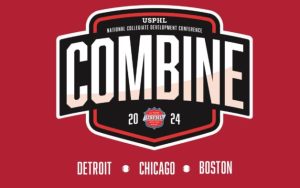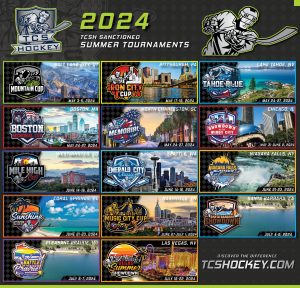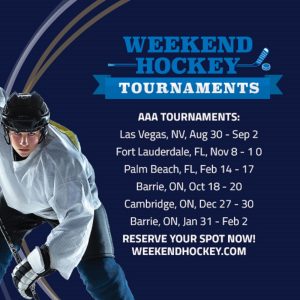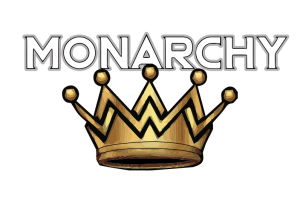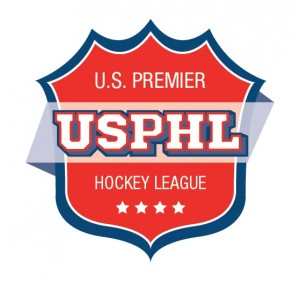San Diego hockey icon O’Ree’s pioneering legacy now includes Hockey Hall of Fame induction

When the San Diego Gulls released their 2018-19 American Hockey League (AHL) promotional schedule, one date immediately stood out from the rest.
The Gulls are hosting Willie O’Ree Night on Nov. 16.
O’Ree, who will turn 83 on Oct. 15, has been an icon in the San Diego hockey community for decades after suiting up for the original San Diego Gulls in the Western Hockey League (WHL) from 1967-74.
His flashy full-speed rushes towards an opponent’s net drew excited shouts and cheers from fans and was a major reason the fledgling WHL franchise saw home crowds routinely soar past the 10,000 mark, the highest in minor league hockey.
O’Ree established himself as one of the WHL Gulls’ most popular players and, with two league scoring titles and five seasons with 30 or more goals, as one of the WHL’s most fearsome scorers.
His pioneering legacy, and that of a community hero, continue to be celebrated today.
In fact, one of the priority items on the AHL Gulls’ list when they faced off their inaugural season in 2015-16 was to hang a banner in honor of O’Ree from the rafters of the Valley View Casino Center, the team’s home rink.
The banner greets fans of all ages, a sizable number of whom were born after O’Ree made hockey history on Jan. 18, 1958, when the then speedy 22-year-old winger broke the NHL’s color barrier while playing in a game in Montreal for the Boston Bruins.
On the upcoming November promotional date, the Gulls will present fans with a custom Willie O’Ree bobblehead. The statuette may not guarantee O’Ree pop icon immortality but it will certainly become a sought-after collector’s item after O’Ree was recently elected to the Hockey Hall of Fame.
O’Ree, along with five other individuals, including NHL commissioner Gary Bettman, will be formally inducted into the Hockey Hall of Fame amid gala ceremonies on Nov. 12 in Toronto.
O’Ree and Bettman will enter the Hockey Hall of Fame in the builders category. Both men join former NHL Stanley Cup champions Martin Brodeur and Martin St. Louis, Russian/Soviet international star Alexander Yakushev and Canadian women’s professional player Jayna Hefford as members of the Class of 2018.
O’Ree, who has served as the NHL’s diversity ambassador since 1998, said he was laughing and crying, and was otherwise at a loss for words, when he received news of his election in late June.
“It’s wonderful,” he said.
Some might argue that O’Ree’s election was long overdue.
After O’Ree made hockey history as the first black man to play in the NHL, another black player would not skate in the NHL again until Canadian Mike Marson suited up for the Washington Capitals in 1974. (Marson, whose playing career lasted from 1974-81 and included 196 NHL games, played three games for the L.A. Kings in 1979-80.)
There can be no question that O’Ree, who has been dubbed the “Jackie Robinson of hockey,” has helped forward change in the game since he played 45 games for the Bruins from 1958-61.
The NHL of that era was confined to the northeastern corner of North America and consisted of just six teams: the Original Six. Its player pool was almost exclusively Canadian-born, including O’Ree, a native of New Brunswick.
 The NHL of today has gone global. Thirty countries can claim players in the NHL.
The NHL of today has gone global. Thirty countries can claim players in the NHL.
Since O’Ree’s barrier-shattering debut, 85 other black players have played in the NHL. The league boasted 24 black players last season.
P.K. Subban, a defenseman for the 2017 Stanley Cup finalist Nashville Predators and one of the league’s most prominent black players, called O’Ree a role model to any player from a different country or minority background.
O’Ree’s election to the Hockey Hall of Fame follows on the ceremonies marking with the 60th anniversary of his history-making feat earlier this year.
The globalization of hockey and the change in social attitudes made the ceremonies a cross-cultural celebration.
O’Ree, who continues to make San Diego his home after retiring in 1979 having played in more than 1,000 professional games, acknowledged the personal pride he felt while attending various events honoring his history-making achievement.
Foremost among the festivities, O’Ree dropped the ceremonial puck at Boston’s TD Garden for a Jan. 17 game between the Canadiens and Bruins. He received a standing ovation that, most notably, started from the benches of both teams.
“I was thrilled when I was in Boston,” recalled O’Ree, whose long list of honors include being appointed to the Order of Canada in 2008 (the award recognizes the highest degree of merit, an outstanding level of talent and service or an exceptional contribution to Canada and humanity). “It took me back to when I first came to the Bruins in their training camp in 1957. I kind of fell in love with the team and the entire Bruin organization.”
Bettman, who has overseen the league’s growth from 24 teams to 31 teams and an increase in annual revenue from $400 million to $4 billion during his 25-plus years as commissioner, lauded O’Ree’s role as a youth ambassador for the NHL diversity program, noting that O’Ree has championed the NHL’s Hockey is For Everyone initiative that has introduced more than 120,000 children of diverse backgrounds to the game and established 36 local grassroots hockey programs geared toward economically disadvantaged youth.
Bettman, who named O’Ree to the post of the league’s diversity ambassador, said O’Ree’s election to the Hockey Hall of Fame took on personal significance to him.
“Just getting to know him over the 20 years, seeing the way he interacts with young people and the difference that he makes in their lives, was absolutely one of the most rewarding experiences I’ve had as commissioner,” Bettman told NHL.com.
So, exactly what does O’Ree remember about the history-making event?
At the time of his call-up, O’Ree was playing for the Quebec Aces, the Bruins’ minor league affiliate in the Quebec Hockey League.
“The Bruins contacted the Quebec Aces, the team that I was playing for, and said they wanted me to meet the Bruins in Montreal to play two games – Saturday night in Montreal and Sunday in Boston,” O’Ree recounted.
“When I arrived in Montreal, coach Milt Schmidt sat me down and Lynn Patrick, the general manager, sat me down and said ‘Willie, we brought you up because we think you can add a spark to our club. You’re no stranger here to the Montreal fans and just play your game and have a good time,’ and basically that’s what I did.”
O’Ree said Schmidt told him not to be concerned about “anything else.”
In fact, as far as O’Ree was concerned, he was just doing his job – being a professional hockey player.
It was only after reading newspapers the next day that he realized the significance of his first NHL call-up.
“It was the next morning that I found out that I did break the color barrier and opened doors for not only black players but players of color that are now playing in the NHL,” he said.
O’Ree drew praise for the manner in which he conducted himself in the face of blatant racial prejudice as the only black player in the NHL in the early 1960s. He was once asked to sit in the back of a bus during a visit to Georgia in 1956.
Fans hurled insults at him during NHL games in an effort to try to knock him off his game.
O’Ree noted in an article posted on Wikipedia that “racist remarks were much worse in the U.S. cities than in Toronto and Montreal,” the two Canadian cities hosting NHL teams at that time, and that “Fans would yell, ‘Go back to the South’ and ‘How come you’re not picking cotton?’ Things like that. It didn’t bother me. I just wanted to be a hockey player, and if they couldn’t accept that fact, that was their problem, not mine.”
NHL players are now required to enroll in a preseason diversity training seminar and racially-based verbal abuse is punished through suspensions and fines.
O’Ree was the center piece of the Gulls’ inaugural Diversity Night, held earlier this year on Jan. 20, which was designed to raise awareness of diverse groups in hockey and drive positive social change and foster more inclusive communities within the sport.
He dropped the ceremonial puck to a standing ovation.
The Gulls, the top developmental affiliate of the NHL’s Anaheim Ducks, recognized diverse groups throughout the evening, including You Can Play, an initiative that works to ensure safety and inclusion for all who participate in sports, including LGBT athletes, coaches and fans; the San Diego Sled Hockey Team that is comprised of disabled and able-bodies athletes ages 14 and older, including active duty military and veterans; and the San Diego Chill, a non-profit organization dedicated to helping children with developmental disabilities play ice hockey.
As the NHL’s director of youth development, O’Ree remains tied to the game he began playing at age five in his native Canada. He now works with children to expand opportunities and preaches a message of inclusion in hockey.
“I’ve had about three titles since I came to the NHL,” O’Ree explained. “When I retired from hockey here in San Diego, I wanted to give back to the sport and give back to the community what hockey had given me for the 21 years I was able to play professional.
“When the NHL came calling in 1996, I was very happy. Now that I’ve been with the program (Hockey is for Everyone) for 20 years I just feel very pleased about having the opportunity to reach out and touch boys and girls to help set goals for themselves and help them play another sport where they haven’t had the opportunity to play before.”
It’s trailblazing efforts like that of O’Ree that has made hockey available to the masses and truly now a global sport.
The Hockey is for Everyone initiative uses the game of hockey – and the NHL’s global influence — to drive positive social change and foster more inclusive communities.
In O’Ree’s own words: when opportunity presents itself, the game grows.
“The first thing I say is for these boys and girls to stay in school and get an education,” O’Ree said. “Education is the key. You can’t go anywhere in the world these days without an education.
“As far as setting goals for yourself, you need to set goals for yourself. You need to work toward your goals and believe in yourself and feel good about yourself and like yourself. I’ve been doing this for 20 years and if I didn’t think the program worked I wouldn’t have stayed with it for 20 years. So just believe in yourself. If you think you can, you can. If you can’t, you’re right.”
The NHL kicks off its 2018-19 season on Oct. 3, while the AHL faces off its 2018-19 season on Oct. 5.
O’Ree puck drop photo/San Diego Gulls
O’Ree jersey photo/Chadd Cady
Other photos/Phillip Brents
– Phillip Brents
(Sept. 29, 2018)

